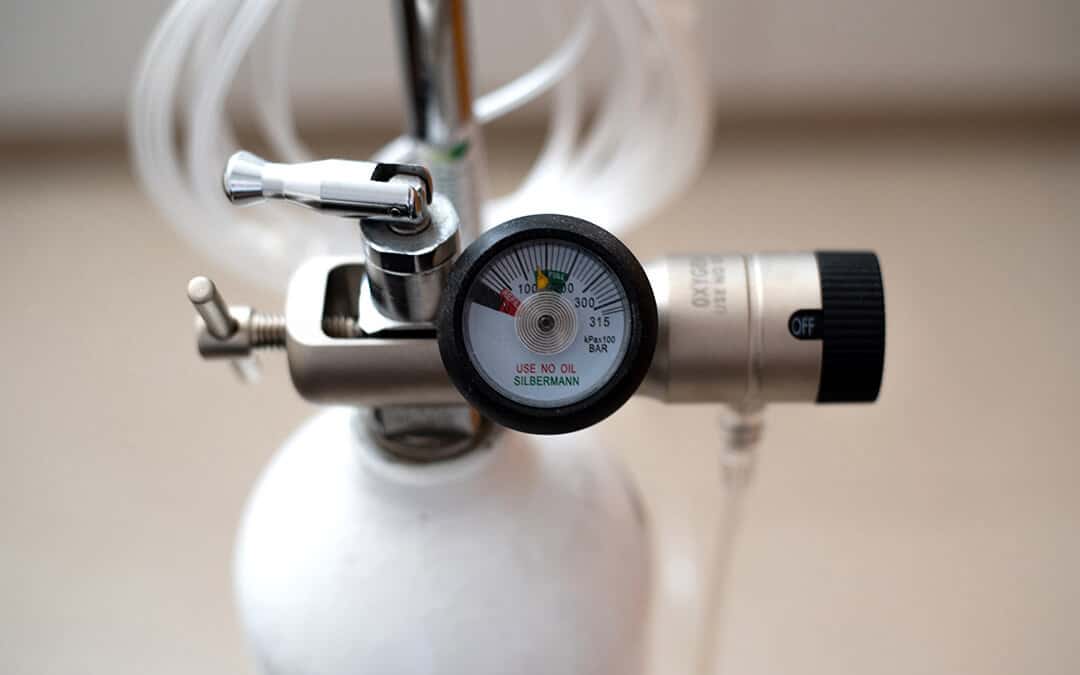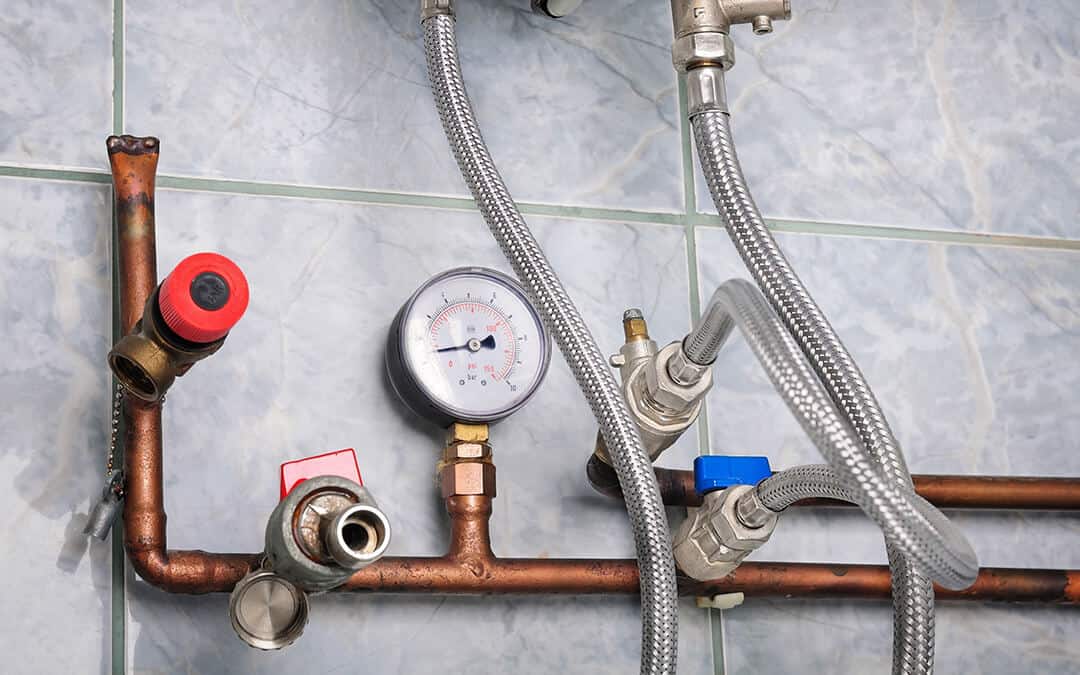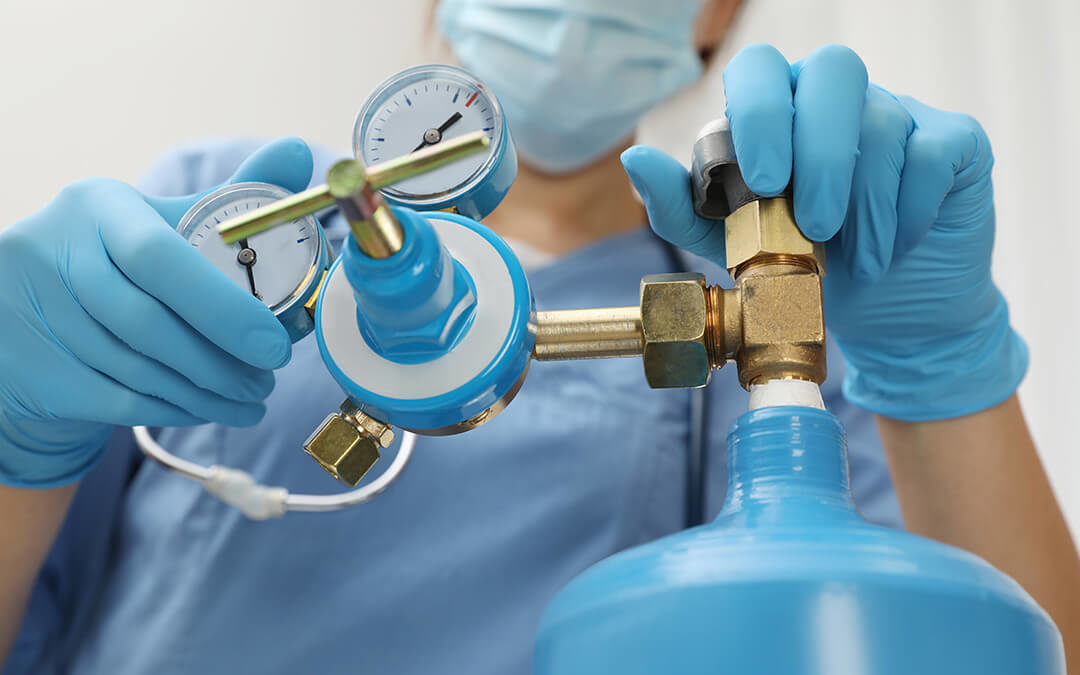The valve system that controls the gas pressure contained in a cylinder is known as a pressure regulator. Because gases are stored in cylinders at high pressures, their pressure must be regulated for controlled release.
Regulators attach to gas cylinders at the inlet connection. When the gas flow reaches a predetermined pressure, the regulator helps the administrator – a doctor or health care professional, for example – manage its release. Gas pressure regulators are not flow control (or flow measurement) devices. Rather, they are used to reduce the high pressure contained in the cylinder and maintain a level appropriate for the desired gas delivery method.
Regulators for gases (in gas form) are different than regulators for liquid gases. Gas regulators should be used only on gas tanks, while liquid gas regulators are meant for specific use with liquid gas tanks. The extreme cold of gases in their liquid state makes them corrosive to the components of non-liquefied gas regulators.

Two Types of Regulators
With direct-operated or self-operated pressure regulators, pressure adjustments are made on the regulator itself instead of on a connected pilot. Direct-operated regulators make pressure adjustments in response to outlet pressure changes in order to maintain a consistent release pressure.
Pilot-operated regulators, or control valves, are similar to direct-operated regulators, with the addition of an attached pilot, responds to conditional changes using an external sense line. The pilot gives the regulator better control over gas pressure, making pilot-operated regulators optimal for applications with higher flow rates.
The Parts of a Regulator
A pressure regulator is made up of a sensing element and a pressure-reducing element. Typically, a spring provides the force needed to open the pressure-holding valve. When the valve is open, the gas pressure is picked up by the sensing element – a diaphragm or piston, for example – which then closes the valve enough to keep the pressure at the level where it was set for release.
A regulator has two external gauges for displaying gas pressure. One gauge displays the inlet pressure or the amount of pressure inside the connected cylinder. The other gauge displays outlet pressure or the pressure of the gas as it exits the cylinder. The outlet pressure gauge is important for ensuring that excessive pressure is not released, risking unintended gas toxicity.

Single-Stage, Dual-Stage
A single-stage regulator – best for short-term applications – reduces gas pressure to a controlled level in a single step. A dual-stage regulator – designed for longer cycles of use with larger volumes of gas – functions as two single-stage regulators in sequence. Both regulator types reduce gas pressure to levels appropriate for delivery by system or instrument. In a dual-stage regulator, the first stage brings the inlet pressure to a preset intermediate pressure, while the second stage lowers the pressure further for measured release.
Controlled gas pressure helps ensure the safe and effective administration of medical gas. Contact CalOx for delivery and maintenance of pressure gas regulators – and cylinders – for a range of medical gas applications.
